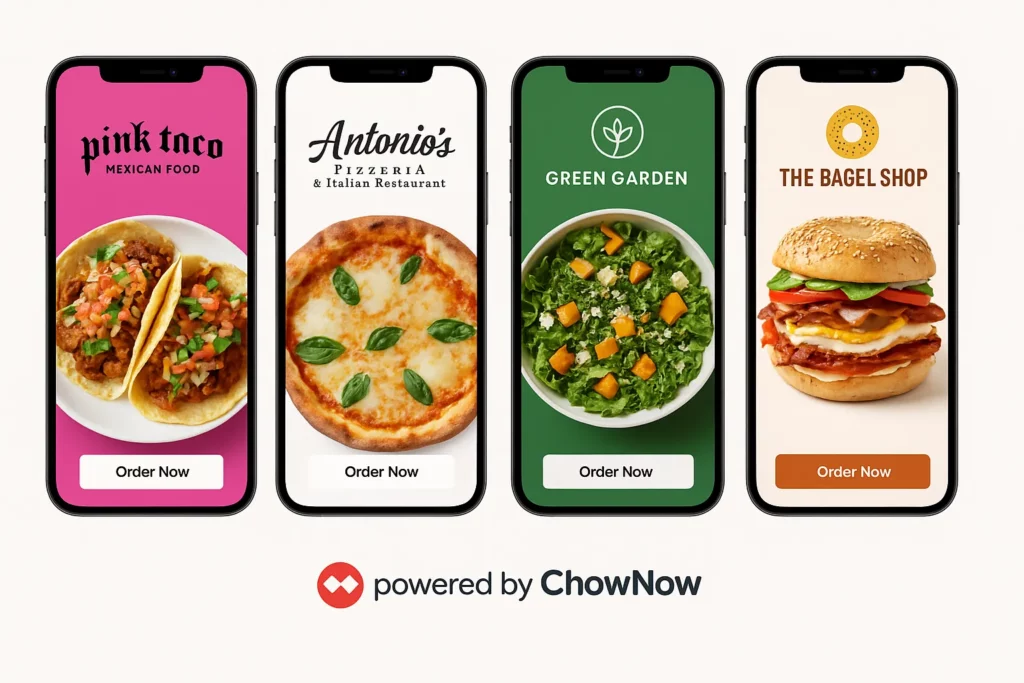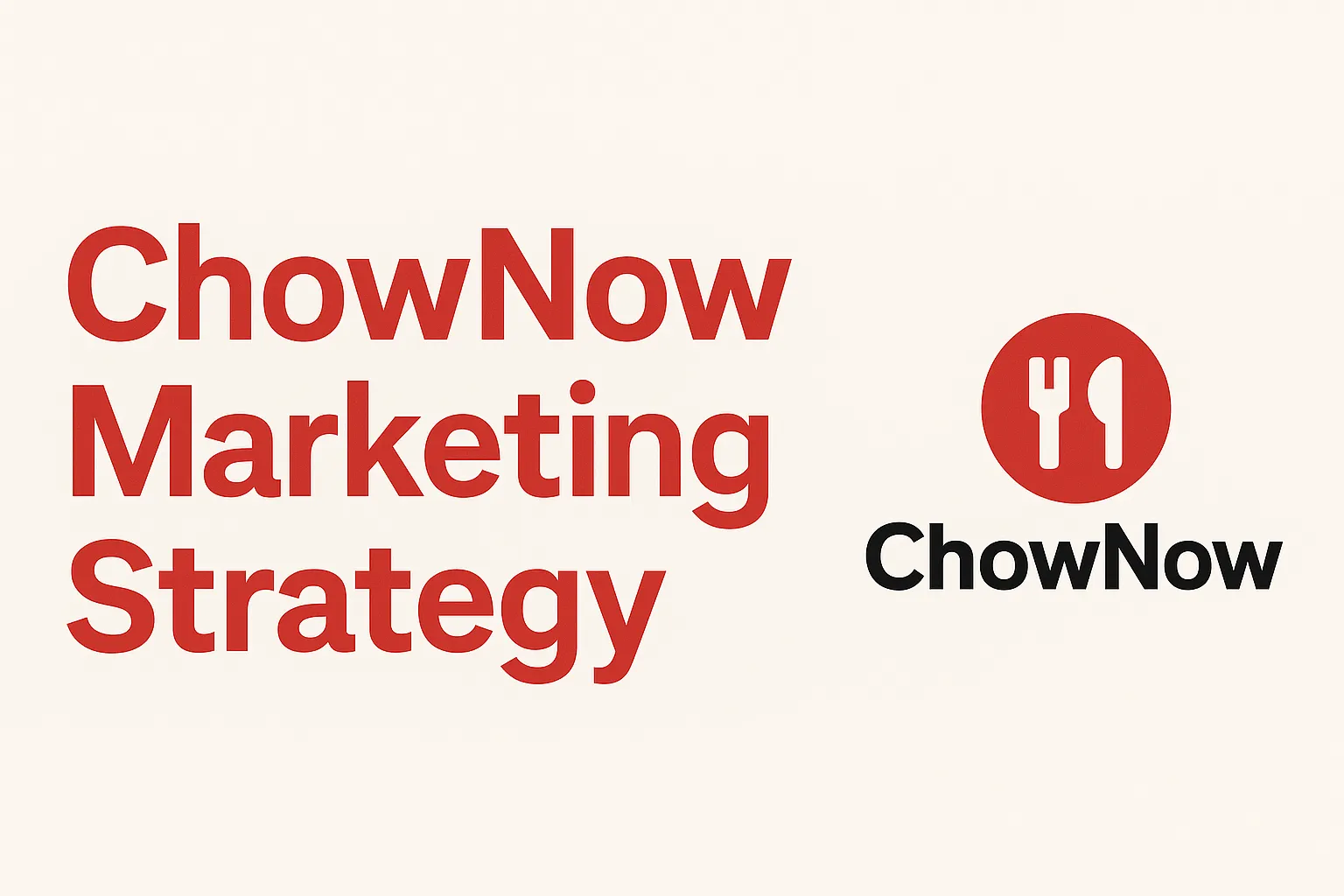Ever waited 40 minutes for your food only to realize the delivery app took a massive cut from the restaurant? You’re not alone—and neither were the thousands of restaurant owners who turned to ChowNow. Unlike delivery giants gobbling up commissions, ChowNow decided to give control back to the folks in the kitchen.
ChowNow isn’t trying to become the next Uber Eats or DoorDash. Instead, it like TechCrunch markets itself as the anti-app-store app—a white-labeled, commission-free platform that helps independent restaurants own their customer experience. And guess what? That unique positioning is exactly why it’s winning hearts, tables, and mobile screens.
If you’re a startup founder or food-tech creator wondering how to build your own restaurant-ordering app without burning marketing dollars on flashy billboards—pull up a chair. This post unpacks ChowNow’s low-key yet high-impact marketing strategy. And hey, if you’re thinking of launching a ChowNow clone? Miracuves has the tech part covered.

Why ChowNow’s Marketing Strategy Hits Different
Positioning as the Restaurant’s Ally
Most food delivery platforms market convenience to the consumer. ChowNow flipped the script—it marketed freedom to the restaurant.
Instead of showing fries or lattes, their landing pages showcased:
- “No commissions, ever”
- “Your branding. Your customers.”
- “We help you grow, not take your profits.”
This pro-restaurant, anti-middleman narrative hit a nerve, especially post-pandemic. And it didn’t just sound good—it converted.
Email Marketing That’s All Brains, No Spam
ChowNow runs a brilliant email funnel—not focused on offers or discounts, but on education. Here’s how:
- First email: “Why commissions are killing your margins”
- Second: Case study of a pizzeria that grew 5x
- Third: Free download – “Menu design tips that boost sales”
By the time you’re on the fourth email, you’re thinking: “Why haven’t I signed up already?”
A Mobile-First Experience That Feels Like Yours
White-Label, But Brand-Loyal
ChowNow doesn’t push its brand. Instead, it offers fully branded mobile apps and ordering systems under the restaurant’s name.
This lets restaurants:
- Stay visible on their own terms
- Retain full access to user data
- Offer a seamless mobile ordering experience
In short, ChowNow became the Shopify of restaurants—quiet tech that lets others shine.
Local SEO + Listings = Digital Foot Traffic
One of ChowNow’s lesser-known marketing moves? Helping restaurants optimize for Google My Business, Yelp, and other local listings.
They created in-house guides and automated tools that:
- Sync menu and hours to all major platforms
- Enable online ordering directly from Google search results
- Keep restaurant info consistent across 30+ channels
This enhanced visibility without restaurants spending a dime on ads.
Retention Over Acquisition: Loyalty Pays the Bills
Built-in Loyalty and Promo Tools
Instead of competing for eyeballs, ChowNow focused on keeping the customers restaurants already had. They offered:
- Loyalty programs branded with the restaurant
- Push notifications for reorders
- Automated discounts for birthdays or repeat visits
This quiet approach created sticky users and increased reorder rates by 45% for some restaurants (TechCrunch, 2022).
Learn More: Build an App Like Chownow: Developer Guide with Node.js & PHP
Community Partnerships Over Mega Campaigns
ChowNow collaborated with:
- Local business bureaus
- Restaurant associations
- Hospitality influencers
This grassroots-style growth helped them build a trust moat that no flashy Instagram ad could replicate.
And for founders building a clone? This is a marketing tactic you can localize, replicate, and scale city by city.
Content That Converts, Without the Corporate Blah
Blog, Webinars & Real-Talk Case Studies
ChowNow’s content isn’t just about tech—it’s about real food, real people. From webinars like “Digital Ordering for Dine-In Success” to blogs like “How a Food Truck Doubled Revenue with Online Orders,” they speak the language of restaurateurs.
Their tone? Casual, confident, and genuinely helpful.
And here’s the kicker: their case studies don’t just list results. They show full ordering flows, ad spend, and customer feedback.
Learn More: Chownow App Features: A Smart Clone Blueprint
What Startups Can Learn from ChowNow
Want to build your own ChowNow-style platform? Don’t just copy the tech—copy the mindset:
- Market to the business, not just the end user
- Empower ownership, instead of pushing dependency
- Invest in organic growth tools like SEO, content, and referrals
- Support over sell — focus on education, not interruption
Miracuves can help you build a ChowNow clone that does exactly this—app-first, mobile-optimized, and loyalty-friendly from the start.
Looking to Build Your Own Restaurant Ordering App like ChowNow Clone? Explore Miracuves’ Clone Development Services

Conclusion
ChowNow isn’t a unicorn because of hype—it’s a hero because of humility. It didn’t go viral, it went valuable. It built slow, marketed smart, and stuck to its values. That’s the kind of growth that lasts.
At Miracuves, we help innovators launch high-performance app clones that are fast, scalable, and monetization-ready. Ready to turn your idea into reality? Let’s build together.
FAQs
How is ChowNow different from DoorDash or Uber Eats?
ChowNow helps restaurants own their ordering experience without charging commissions, unlike third-party delivery giants.
What kind of restaurants use ChowNow?
Primarily independent restaurants, food trucks, and regional chains that want to build loyal customers and avoid middlemen.
Does ChowNow run ads for restaurants?
Not directly. It equips restaurants with SEO, ordering tools, and content to attract and retain customers.
Can I build a ChowNow clone for my local market?
Absolutely. With the right tech partner like Miracuves, you can launch a fully-branded ordering platform quickly and affordably.
Is ChowNow mobile-friendly?
Yes! ChowNow powers branded mobile apps that let customers order with ease across Android and iOS.
What’s ChowNow’s main marketing channel?
Content marketing, local SEO, email funnels, and partnerships with restaurant communities drive most of their organic growth.








